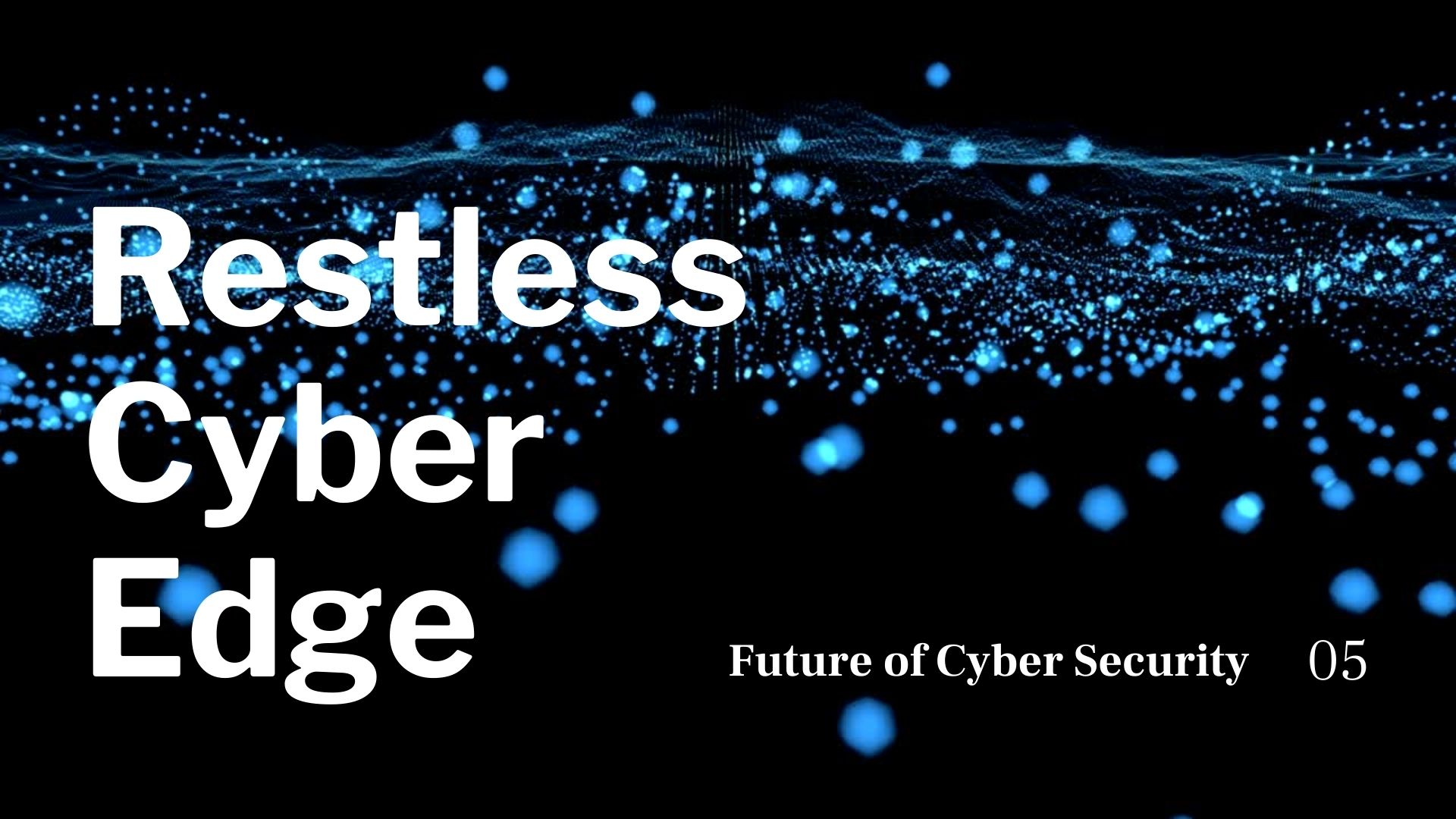Best AI Presentation Makers of 2025
April 14, 2025, 16 min read
Unless you’re living in the era when the computer was first invented (sounds like ancient history, right?), there’s really no reason for you to be manually dragging every text box into place like it’s a game of Tetris. And if you are still doing that… let me just grab your oil lamp to go with it.
Look, if you’re a designer who swears AI will never touch your divine sense of color palettes and spacing, fine. Hold your ground. But even then, I’d gently suggest: come on.
The reality? Presentations are lifeline for a lot of folks. White-collar workers are churning out decks for every meeting, project update, and quarterly report like it’s a second full-time job. Freelancers are pitching clients with shiny PDFs and slides trying to win their next gig. Students. Founders. Agencies. Teachers. You name it. The presentation hustle is real — and honestly, it’s exhausting.
So why are so many of us still wasting hours on layouts, fonts, and resizing images like it’s 2012?
Luckily, tech heard our collective cries and went: bet.
Now we have AI tools that can whip up decent (and sometimes downright impressive) presentations with just a few prompts and clicks. The best part? You don’t need to be a designer, a copywriter, or even particularly awake to get results that look like you tried.
In this blog, we’re diving into:
- How we tested and picked the best free AI presentation makers out there
- A list of top tools, with context on who each one is great for
- The subtle design sameness creeping into AI-generated slides — and how to fight it
- guides on how to write an amazing prompt to get better results from these tools
- And the real question: do you even need design skills anymore?
So whether you’re prepping for a client pitch, team meeting, or trying to impress your cat with your side hustle slides — you’re in the right place.
Let’s make decks faster, better, and with 99% less rage-clicking.
How We Chose the Best Free AI Presentation Tools
There are a lot of AI tools out there claiming they’ll “revolutionize how you present” — which sounds amazing until you open one and realize it just gave you a deck that looks like it was built by a robot… for other robots.
So how did we filter the gold from the glitter? We tested these tools like real humans with real deadlines — the kind who need something presentable in 20 minutes and have exactly zero patience for clunky UX or chaotic layouts.
Here’s what we looked at:
- Content Quality: Does the AI actually help you say something — or is it just regurgitating whatever prompt you gave it like a parrot with a PowerPoint addiction?
- Layout & Design: Are the slides clean, structured, and visually appealing — or do they look like a template someone gave up on halfway through?
- Usability: Is it easy enough that your tech-averse coworker could use it without starting a support ticket?
- Pricing: Free actually needs to mean free. If a tool locks every useful feature behind a paywall, it’s not making this list.
So, believe me — you’re in good hands. Now it’s time to meet the tools that earned their place in a list this grand (and yes, we judged them hard).
Best AI Presentation Makers of 2025
We told you our criteria for this list and now it is time to inspect the actual list. Let’s start.
- Best for: Creating clean, modern presentations with minimal effort and high flexibility.
- Pricing: Free tier available with premium plans starting at $8/month.
- Content Quality: 9/10
Gamma takes a refreshingly different approach to presentations. Instead of forcing you into rigid slide formats, it uses flexible “cards” that can be arranged more like a narrative or scroll-based experience. The AI engine is genuinely helpful — you can feed it a simple prompt and receive a structured, coherent presentation with smart visual hierarchy and layout suggestions. It’s especially good at turning raw ideas into polished frameworks, which is perfect for professionals who need to go from concept to delivery fast.
Where Gamma really shines is in its balance of usability and customizability. It doesn’t overwhelm the user with too many decisions, yet it gives just enough control to make designs feel intentional. Collaboration features are also strong — teams can work together in real-time, leave comments, and revise without breaking anything.
However, Gamma does have a few trade-offs. While it allows customization, the design system is a bit limited compared to fully manual tools like PowerPoint or Canva. You get harmony, but at the cost of deeper design control. For most users, though, the output is more than sufficient — it feels clean, sharp, and professional.
- Best for: Narrative-driven presentations that prioritize storytelling and design aesthetics.
- Pricing: Free with limited exports; Pro plan starts at $10/month.
- Content Quality: 8.5/10
Tome positions itself as more than a presentation tool — it’s a storytelling engine. It leans heavily into the idea that presentations are not just about slides, but about engaging narratives. The AI performs well when given prompts with structure or purpose. For example, if you’re trying to pitch an idea or walk through a journey, Tome responds with a clear arc: intro, challenge, solution, outcome.
The design visuals feel modern and curated. You’re not stuck in a box of boring default templates — Tome offers large-format visuals, minimalist design blocks, and enough breathing room to make everything feel premium. Animations and transitions are subtle and polished, giving a web-native experience rather than a downloadable slide deck.
The tool’s biggest strength is also its limitation: if you’re not aiming for a linear story or if your content is highly data-driven (think charts, stats, reports), Tome may fall short. It’s more TED Talk than quarterly review. Additionally, while customization is available, it’s not meant for those who want pixel-perfect control.
Still, for brand storytelling, startup pitches, or educational content that needs to resonate emotionally, Tome stands out as a top-tier option.
- Best for: Users who want professional-quality presentations without needing design expertise.
- Pricing: Free trial available; paid plans start at $12/month.
- Content Quality: 8/10
Beautiful.ai delivers exactly what its name promises — clean, visually appealing slides that look like they were made by a professional designer. It works by using a set of “smart templates” that auto-adjust based on your content. That means no dragging, aligning, or stressing over whether things look balanced — the system does it for you.
The AI here is less about generating full decks and more about real-time layout optimization. You add content and it adapts, nudging your design toward visual harmony. This makes it ideal for professionals who are short on time or who feel anxious about slide design. It’s a huge step up from traditional manual formatting.
The limitations come into play when you want to go off-script. The tool prefers structure and doesn’t easily let you break the grid. If your content doesn’t fit the logic of its templates, you’ll find yourself fighting the system. Also, while the visuals are strong, they can sometimes feel a bit sterile — there’s less room for bold creativity or design experimentation.
In short, Beautiful.ai is for the practical user who values polish and speed over radical design freedom. If you want to look sharp in less time, this is a strong choice.
- Best for: Teams seeking collaborative, design-forward presentations with real-time editing capabilities.
- Pricing: Free tier with core features; Pro plan starts at $20/month per user, offering advanced analytics and export options.
- Content Quality: 8.5/10
Pitch stands out as a modern presentation platform tailored for teams that prioritize both aesthetics and collaboration. Its intuitive interface allows users to create visually appealing decks swiftly, leveraging a range of customizable templates and design elements. The real-time collaboration feature ensures that team members can work simultaneously, streamlining the creation process and maintaining consistency across slides.
The platform’s AI capabilities assist in generating content drafts, suggesting layouts, and ensuring brand alignment by allowing the incorporation of custom fonts, colors, and logos. However, while Pitch excels in design and collaboration, it has limitations in terms of chart variety and slide resizing options.
Additionally, the AI may occasionally misinterpret specific requests, necessitating manual adjustments. Despite these minor drawbacks, Pitch remains a top choice for teams aiming to produce professional presentations efficiently.
- Best for: Microsoft 365 users seeking integrated AI assistance within the PowerPoint ecosystem.
- Pricing: Requires a Microsoft 365 subscription ($70/year for individuals or $100/year for families) plus an additional $20/month for Copilot Pro.
- Content Quality: 8/10
Microsoft Copilot Pro integrates seamlessly into PowerPoint, offering users AI-driven assistance to enhance their presentations. From generating slide content based on prompts to suggesting layouts and incorporating relevant visuals, Copilot Pro streamlines the presentation creation process. Its integration with other Microsoft 365 apps, like Word and Excel, allows for cohesive content development across platforms.
While the tool offers significant productivity benefits, it’s essential to note that some users have reported occasional inaccuracies in AI-generated content, especially in complex data interpretations. Additionally, the added cost atop the standard Microsoft 365 subscription may be a consideration for some users. Nonetheless, for those deeply embedded in the Microsoft ecosystem, Copilot Pro offers a valuable enhancement to the traditional PowerPoint experience.
- Best for: Users seeking a quick, AI-assisted design process within the familiar Canva environment.
- Pricing: Free with basic features; Pro plan at $12.99/month offers advanced tools and assets.
- Content Quality: 8/10
Canva’s Magic Design feature leverages AI to assist users in creating presentations by generating design suggestions based on user input. By inputting a prompt or content, users receive a range of design options tailored to their needs, streamlining the creation process. The tool is especially beneficial for those who may not have a design background but require professional-looking presentations.
While Magic Design offers a plethora of templates and design elements, the AI’s suggestions may sometimes lack the depth or specificity required for niche topics. However, Canva’s extensive library and user-friendly interface allow for easy customization, ensuring that users can fine-tune their presentations to their exact specifications. For those already familiar with Canva, Magic Design serves as a valuable addition to their design toolkit.
- Best for: Google Slides users seeking AI-assisted content generation within their existing workflow.
- Pricing: Free tier available; Pro plan starts at $10/month, offering enhanced features and integrations.
- Content Quality: 7.5/10
Plus AI integrates directly with Google Slides, providing users with AI-driven assistance to generate and refine presentation content. By inputting prompts, users can receive structured slide content, which can then be customized further. The tool is particularly beneficial for users who are already accustomed to the Google Workspace environment and are looking to enhance their productivity.
While Plus AI offers a convenient solution for content generation, its design customization options are somewhat limited compared to standalone design platforms. Additionally, the AI’s suggestions may require manual adjustments to align perfectly with the user’s vision. Nevertheless, for Google Slides users seeking a straightforward AI assistant, Plus AI presents a practical choice.
- Best for: Microsoft 365 users looking for basic AI assistance without the additional cost of Copilot Pro.
- Pricing: Included with Microsoft 365 subscription.
- Content Quality: 7/10
The standard Copilot feature in Microsoft 365 offers users foundational AI assistance across applications like Word, Excel, and PowerPoint. While it doesn’t boast the advanced capabilities of Copilot Pro, it still provides valuable tools such as content suggestions, basic data analysis, and layout recommendations. For users who require occasional AI assistance without committing to an additional subscription, this version of Copilot serves as a useful resource.
However, it’s essential to recognize that the standard Copilot’s functionalities are limited compared to its Pro counterpart.Users seeking more in-depth AI integrations and advanced features might find the standard version lacking. Nonetheless, for basic tasks and occasional assistance, it offers a cost-effective solution.
- Best for: Google Workspace users seeking integrated AI assistance for content creation and visual enhancements within Google Slides.
- Pricing: Requires Google One AI Premium subscription at $20/month.
- Content Quality: 8.5/10
Gemini is Google’s AI-powered assistant integrated into Google Workspace, including Google Slides. It offers features like AI-generated visuals, contextual chart and graph creation, and content suggestions to enhance presentations. Users can prompt Gemini to generate images or suggest visuals based on slide content, facilitating a more engaging presentation design. Additionally, Gemini can assist in crafting on-brand elevator pitches and refining slide content. While it excels in integrating AI capabilities within the Google ecosystem, access requires a premium subscription, which may be a consideration for some users.
- Best for: Quick generation of presentations from diverse content inputs, ideal for users seeking rapid slide creation.
- Pricing: Free tier available; premium plans start at $8/month.
- Content Quality: 7.5/10
MagicSlides is an AI-powered tool designed to streamline the creation of professional presentations. Users can input various content types, including topics, YouTube videos, PDFs, or plain text, and the tool transforms them into visually appealing slides. Its integration with Google Slides allows for seamless editing and collaboration. MagicSlides supports over 100 languages, catering to a global audience. While it offers a range of templates and design options, some users may find the customization features limited compared to other tools. Overall, MagicSlides is a valuable asset for those needing to generate presentations quickly without extensive design work.
- Best for: Transforming textual content into structured presentations, suitable for educators, students, and professionals.
- Pricing: Basic plan is free; Pro plan at $8/user/month; Premium plan at $15/user/month.
- Content Quality: 7/10
SlidesAI is an AI-driven tool that converts text into presentation slides, integrating seamlessly with Google Slides. Users can input up to 12,000 characters, and the AI generates a structured presentation, complete with layouts and design elements. The tool offers customization options, including various presentation types and color presets. SlidesAI supports over 100 languages, making it accessible to a broad user base. While it excels in transforming content quickly, the design elements may lack the polish of more design-focused tools. Nevertheless, SlidesAI is a practical solution for users looking to expedite the presentation creation process.
- Best for: Users seeking rapid generation of professional presentations with AI-driven design and content suggestions.
- Pricing: Free tier available; Pro Plan at €30/month, with special offers reducing it to €15/month.
- Content Quality: 8/10
Presentations.ai is an AI-powered platform that streamlines the creation of presentations by generating complete decks from simple prompts. It offers features like text rewriting, image generation, theme customization, and animation additions. The platform supports drag-and-drop functionality and provides a variety of design elements, making it accessible even to users without advanced design skills. However, some users have noted that AI-generated image placements may occasionally lack coherence, and the design aesthetic might feel dated to some. Despite these minor drawbacks, Presentations.ai remains a robust tool for efficient presentation creation.
- Best for: Crafting data-driven business presentations with a focus on storytelling.
- Pricing: Free tier available; Pro plan at $20/month.
- Content Quality: 8/10
STORYD is designed to help users create compelling business presentations by transforming data into engaging narratives. The platform guides users through a structured process, emphasizing the importance of storytelling in conveying data insights. With AI assistance, STORYD aids in organizing content, suggesting visuals, and ensuring a coherent flow throughout the presentation. While it excels in its niche, users seeking more general-purpose presentation tools might find its focus on data storytelling somewhat limiting.
Okay, our list is done! Now it is time to face some hard truths: your presentation and your colleagues are twinning! What to do is in our next section.
The AI Aesthetic: Why They All Kinda Look the Same (and What to Do About It)
After using AI to ‘help’ you make your slides, you might realize something: they all look the same… Yep, that happened. But don’t blame the AI. It’s just playing the hand it’s dealt.
Most of these tools are designed to be universally appealing, which often leads to sameness. The default templates, styles, and elements are all optimized for quick, broad usability, not bold originality.
That doesn’t mean you’re stuck with uninspired designs, though. Here’s what you can do to stand out:
Customize Within the Tool
Even the most basic AI presentation software lets you tweak colors, fonts, and layouts to fit your brand. Don’t just accept the default! Change up the colors to something that pops, swap out icons for custom ones, and get creative with the layout to give your slides that personal touch.
Use AI to Enhance, Not Define
Think of the AI as your assistant, not the lead designer. Use it for structure, ideas, and initial drafts, then go in and make the design truly yours. Don’t let the tool dictate every detail. Add your unique spin.
Import Your Own Assets
If the design elements offered by the AI don’t fit your vibe, go ahead and import your own images, logos, or graphic elements. Some AI tools make it easy to upload assets, letting you align the design with your vision.
The point is, AI presentation tools might have similar aesthetics, but you don’t have to settle for generic. With a little tweaking and some creative input, you can still make your slides reflect your unique style, brand, or personality. And hey, a dash of human creativity will always elevate what AI can offer.
Prompts That Actually Work (This Is the Secret)
When it comes to AI presentation makers, prompts are your ultimate customization tool. They’re what make your presentation unique, polished, and—most importantly—yours. But, of course, there’s an art to it.
Think of it like this: you have an army of ants. They’re hardworking, strong, and totally capable of getting the job done. But as their leader, you need to give them the right commands to ensure they’re carrying out your vision. Without clear, precise instructions, you might just end up with a trail of ants going in every direction.
The same goes for prompts. It’s not just about typing a vague request and hoping for the best. It’s about asking the right questions, being specific, and giving the AI enough direction to produce something that actually fits your needs. The more precise and clear your prompts, the better the results.
Here’s how you can get it right:
- Be Specific: Instead of asking for “a business presentation,” try something like “a business presentation on cybersecurity trends with a modern, minimalist design.” The more specific you get, the more the AI will understand your intentions.
- Use Contextual Cues: Provide context about your audience, purpose, and tone. Are you speaking to a boardroom? A classroom? A potential client? The AI can tailor your presentation better when it knows who it’s talking to.
- Iterate: Don’t be afraid to refine your prompts after seeing the first result. Sometimes, the AI might not nail it on the first try. Adjusting the prompt gives you a chance to fine-tune the output and get even closer to your ideal presentation.
With a little practice, you’ll see how much of an impact well-crafted prompts can have. It’s not just about the tool—you’re the one steering the ship. And when you get your prompts right, that’s when the magic happens.
Do You Even Need Design Skills Anymore?
Okay, okay, by now you’re probably thinking, “Wait—so AI does all the heavy lifting for me? But then… do I even need design skills anymore?” It’s a fair question, and honestly, I get it. After diving deep into the world of AI presentation makers and realizing how easy it is to get professional-level results, it can feel like the whole concept of design has lost its luster. The days of spending hours trying to perfectly align text boxes and agonizing over fonts might seem like a thing of the past.
But before you spiral into a chaotic panic thinking that the art of design has been completely hijacked by machines, take a deep breath. The presentations we’re talking about here aren’t some artsy, avant-garde design projects meant to be displayed in a gallery. They’re practical tools that a non-artistic employee has to crank out on the regular to get the job done—be it pitching ideas, reporting data, or sharing company updates.
Your artistic integrity is intact, I promise. What we’re focusing on is functionality, clarity, and ease of communication. It’s about creating presentations that work—and, in most cases, get the job done faster than you could ever do on your own. Art hasn’t been compromised—it’s just that, for most of us, the goal is less about creating a masterpiece and more about getting a message across. So while AI can help with the heavy lifting, true artistry is still about understanding your audience, telling a compelling story, and, well, putting your soul into it.
So, for the last time: You don’t need a deep design background to come up with a decent presentation. With AI, you’ve got all the creative structure you need—without the need to know anything about fonts, color theory, or layout. These tools help you by giving you the foundation, and all you need to do is tweak it to suit your needs. You don’t have to be a Picasso to put together a professional presentation.
That’s the beauty of technology—it makes the process easier, faster, and way less stressful.
What’s Next? Final Thoughts
Go, my beloved bird, go—flap your wings toward the future and success.
You’ve seen the tools, the tricks, and the truths. Now it’s time for you to take off and start building presentations that don’t just exist but actually do something. Whether you’re pitching a new project, applying for your dream gig, or just trying to make your Monday meeting a little less painful, you’ve got the knowledge—and the AI army—to back you up.
Remember, AI isn’t here to replace you. It’s here to amplify you. To help you go from “meh” to “wait—you made that?” in record time. So go explore, test things out, mess up a slide or two, then fix it with a click. Learn what works for you.
Because in the end, the best tool is the one that helps you get your ideas out into the world without making you question your entire life in the process.
Now go on. Make something great.
(And maybe—maybe—leave the oil lamp behind this time.)




























